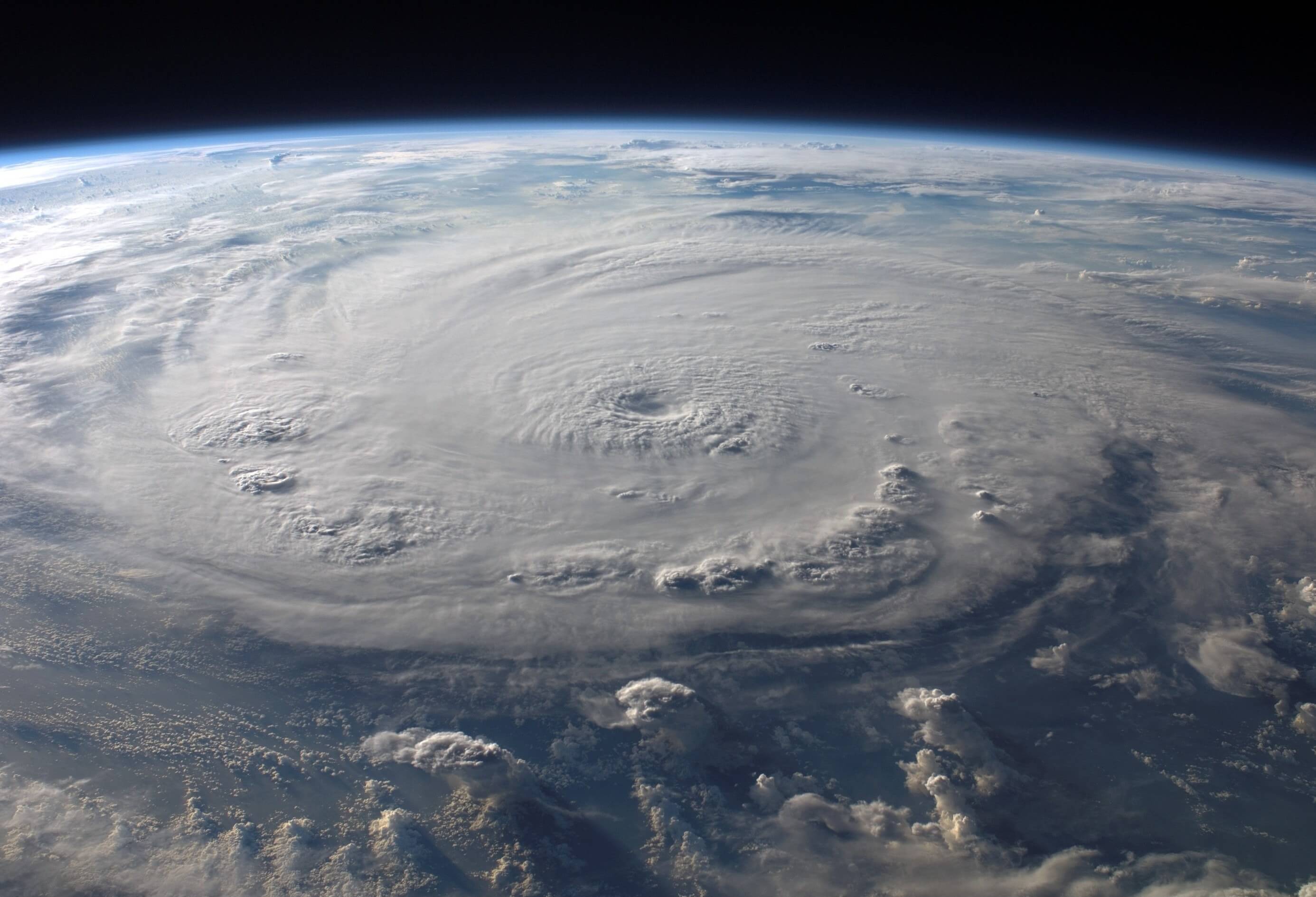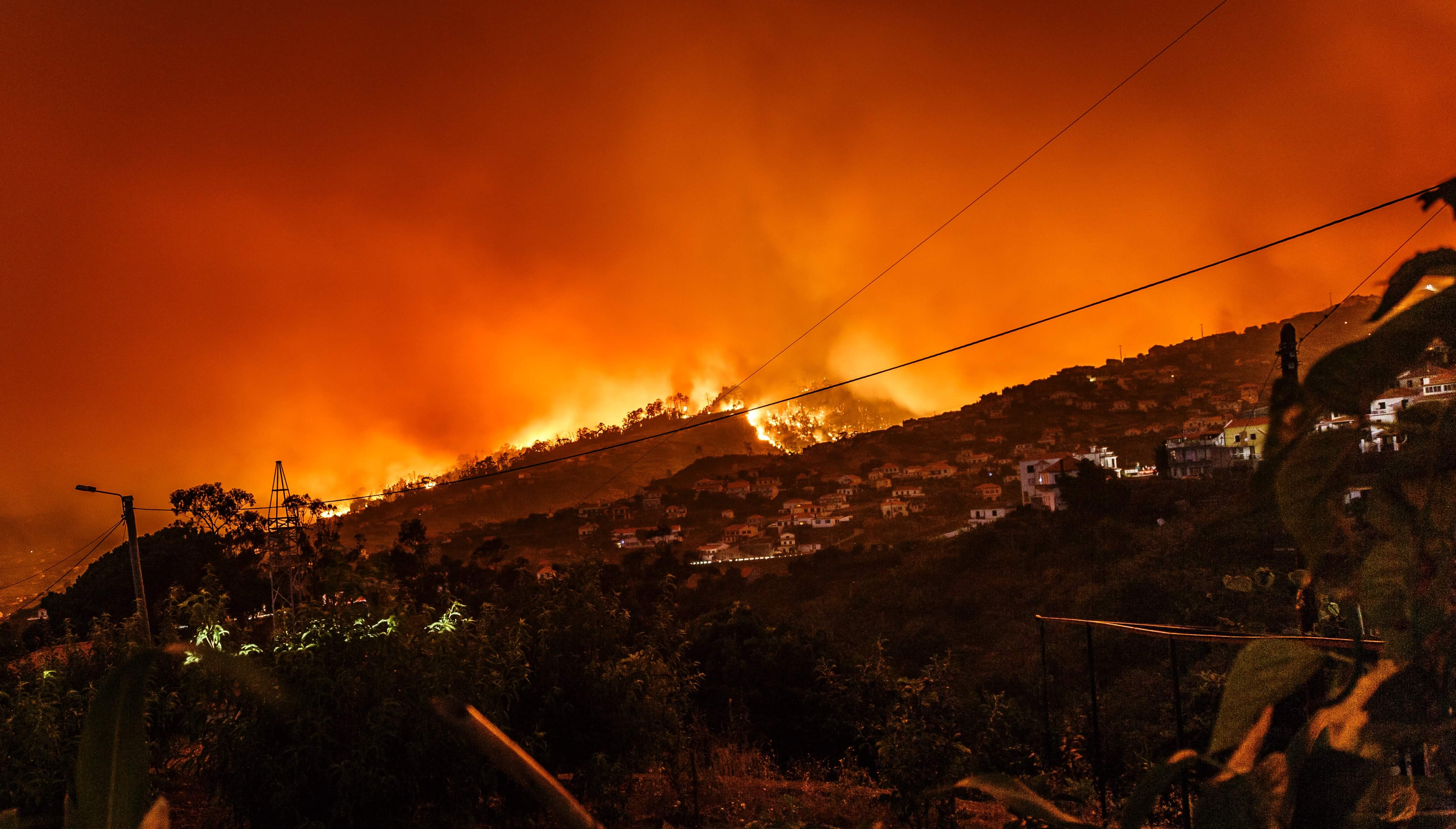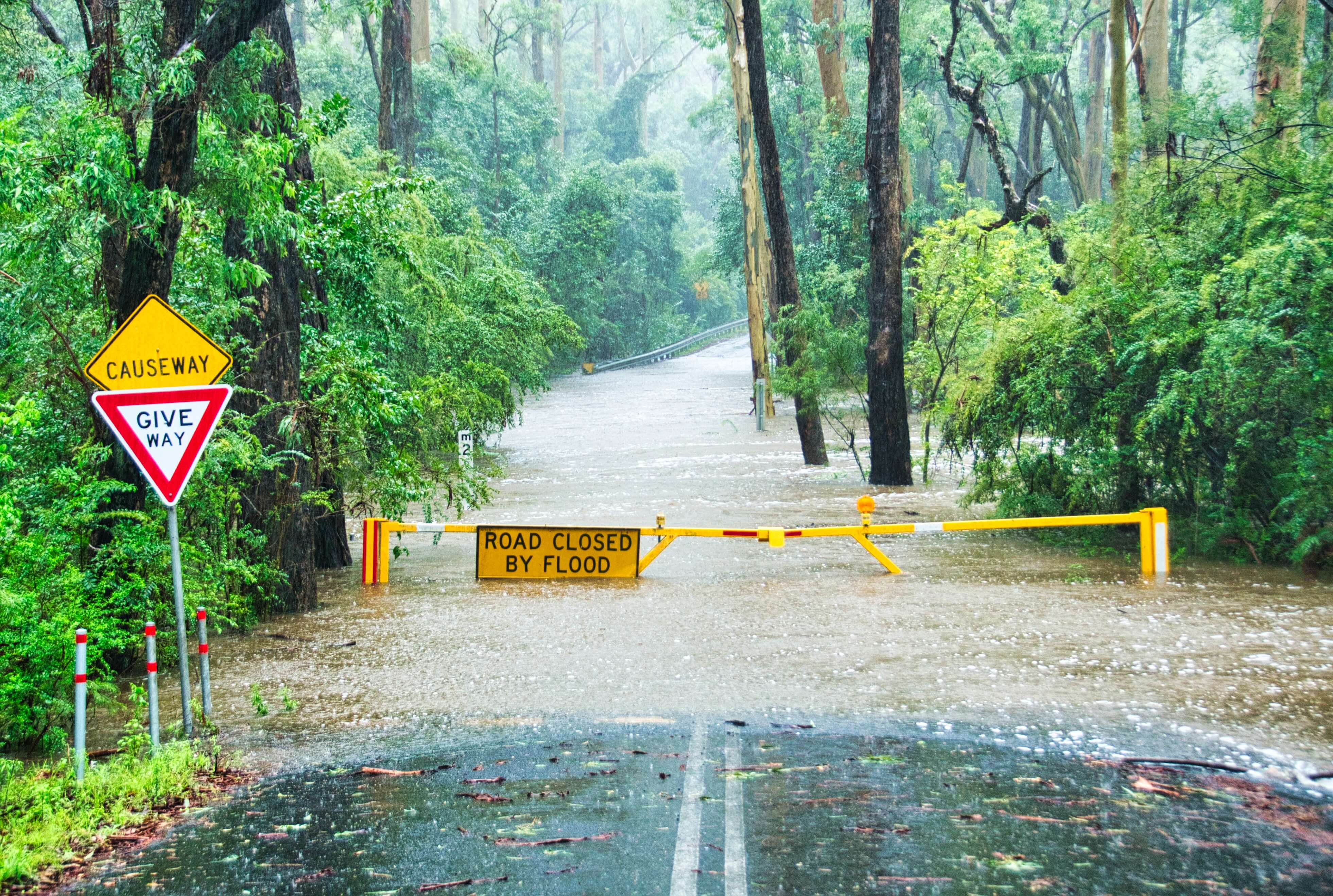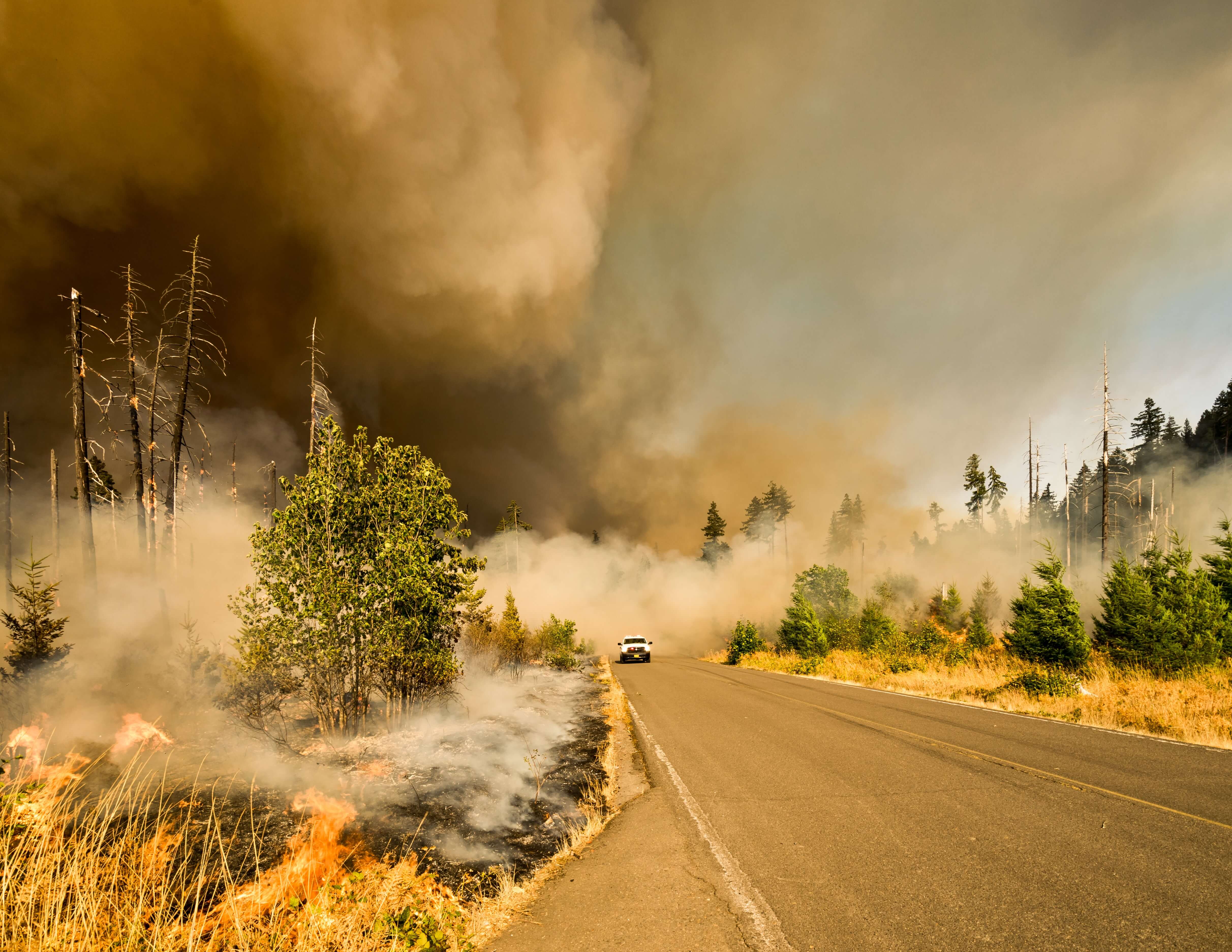
Source: Pixabay
Scientists agree we have changed the global climate system by heating it. Within this hotter system, our regional weather patterns have changed too. Extreme weather events such as heatwaves, hurricanes, flash floods have become a lot more frequent in the last twenty years alone. It is now clear that there are direct links between the increased frequency and intensity of these events and human actions that are accelerating climate change.
At the end of 2019, the American Meteorological Society (AMS) drew attention to heavy rainfall on the east coast of the United States and record-setting low-levels of sea ice in the arctic as a result of human-caused climate change. The AMS made this report in its 8th annual bulletin, Explaining Extreme Events in 2018 from a Climate Perspective. The bulletin’s editor, climate scientist Dr. Stephanie Herring is one of the Top 100 Global Thinkers recognized by Foreign Policy magazine. Speaking of her work at the National Oceanic and Atmospheric Administration (NOAA), Herring stated:
“[W]e are … seeing mounting evidence for our ability to identify a climate change signal in different types of extreme weather events, especially for forest fires and precipitation.”
Another leading climate attribution scientist - someone who studies the links between climate and extreme weather - Dr. Friederike Otto of Oxford University’s Environmental Change Institute, agrees. According to Otto, climate attribution science is cautious and conservative, so it probably underestimates how much extreme weather is driven by climate change.
Humans are Changing the Climate to Favour Extreme Weather

Source: Michael Held, Unsplash
The United States’ National Climate Assessment concluded in 2014 that humans have changed the earth’s patterns of warming and cooling by increasing atmospheric carbon. As extreme weather patterns and climate events have grown in recent decades, new evidence has shown that, in some cases, this is being driven by human activity.
Extreme weather will continue to be both more frequent, and more intense. Increasing levels of heat energy trapped in the atmosphere and oceans will lead to hotter, wetter, and stormier weather. Extreme rainfall, powerful Atlantic hurricanes, Australian cyclones, high tide flooding, and massive storm surges in coastal areas are just some of the events we will be faced with on a more regular basis.
There’s No Climate Denial in the Insurance Industry
It’s not only scientists who have been warning us about the rise of extreme weather. Finance and insurance experts have been linking atmospheric carbon and extreme weather for decades. “Forty weather disasters in 2019 caused damages exceeding $1 billion each,” reports McKinsey and Company, a management consulting firm — and “the economic toll ... has been escalating.”
Munich Re is a global reinsurance company that insures insurance companies. They have studied how “the frequency of weather-related catastrophes rises in step with global warming” since the early 1970s. Today Munich Re warns of the increasing risks of floods, cyclones, winter storms, thunderstorms, hail, tornados, wildfires, droughts and heatwaves. Some companies, like Risk Management Solutions (RMS), specialize in analyzing these risks for insurers.
Insurance Australia Group (IAG) is a reinsurer that has seen its profits cut in half due to bushfires and COVID-19. IAG’s first Severe Weather in a Changing Climate (2019) said Australia’s “bushfire seasons are becoming longer and more extreme”. This is in the context of The World Wide Fund for Nature (WWF) labelling the 2019-2020 Australian bushfires one of “the worst wildlife disasters in modern history.”
In addition to the risk of more big fires, IAG also predicts stronger cyclones with wind speeds up to 251km/h that will strike deeper inland. In the past, major Australian population centers were not threatened by these storms. As such, cities now at risk like Brisbane and the Gold Coast were not built to withstand high winds. It’s not surprising, then, that the late 2020 edition of the IAG’s ‘severe weather report’ predicts “greater property, personal and economic damage, and hardship for Australian communities.”
Economic and Military Planning Includes Extreme Weather

Source: Philip Flores, Unsplash
The United States’ Commodity Futures Trading Commission has made “dire warnings” about the impact of climate change-driven extreme weather on agricultural commodities. In the past, agriculture was a safe place to invest pension and retirement funds, but that is no longer the case. Extreme weather threatens food production and distribution, and this is driving investors away.
The US military has been affected by extreme weather too — from hurricanes and floods damaging air force bases to equipment failures, to a dramatic rise in heat-related casualties. Fighting in hot weather requires supply lines carrying more water, fuel, and other provisions which then become targets.
Humans are Biasing the Climate System Toward More Extreme Weather

Source: Marcus Kauffman, Unsplash
You can think of the increased risk for extreme weather on a warming planet this way: what if a simple coin toss stopped resulting in the expected 50/50 split? If I flip a coin fifty times, I expect nearly half the tosses will come up heads, and nearly half should come up tails. If I flipped a coin and saw it come up on the same side 60% of the time, after hundreds of tosses I would believe something was biasing the coin to give those results.
Climate change is like that. More carbon in the atmosphere “rigs” the “game” - the earth’s climate system - meaning we are going to be “unlucky” more often than we would have been a century ago. There is already widespread scientific consensus that we are experiencing more extreme weather today as a result of global warming. What is alarming is that the more carbon emissions we release, the more we bias the earth’s climate towards these extreme weather events, with potentially disastrous results.
What Types of Extreme Weather are Increasing in…
The United States
- Flooding from heavy rain in the mid-Atlantic states in 2018 is 1.5 times more likely to occur now than it was in the last century. (Explaining Extreme Events 2018)
- Drought in Arizona, Utah, Colorado and New Mexico in 2018 was worsened by high temperatures from climate change. Less moisture was available in the soil that summer because the March snowpack had been about 20% lower than past averages. (Explaining Extreme Events 2018)
- Extreme heat has become approximately twice as common in the past ten years compared to previous decades. (C2ES) According to an engineering study in Arizona, increasing air temperatures in the US desert southwest “will strain the electric power grid through increased loads, reduced power capacities, efficiencies, and material lifespans.” Critical components of the electrical grid could require much more frequent maintenance or replacement with outages happening up to 30 times more often, and “the probability of cascading failures could increase 30 times as well for a 1°C increase in ambient air temperature.” A major grid failure during a heatwave in a highly-populated area with a large elderly population would likely see casualties in the tens of thousands. Los Angeles County, the largest metro on the west coast, may be especially vulnerable.
- Wildfires in dry forests have “doubled ... between 1984 and 2015 in the western United States.” (C2ES)
- Hurricanes are becoming more powerful and damaging with higher wind speeds (Category 4 and 5) due to warmer ocean surface temperatures. (C2ES) It is becoming less unusual for hurricanes to rapidly increase in wind speed or to move very slowly with heavy rainfall, like Hurricane Sally in 2020.
- Tornadoes have been emerging more often in clusters of increasing severity since the 1950s. The causes are not all clear yet, but climate change is likely involved. Outbreaks of tornado clusters from a common weather system over a particular geographic region can range from six to several hundred tornados. While the total number of tornadoes is not clearly increasing in annual averages, single days with more than 30 tornadoes classified as EF1 or greater have increased dramatically in recent decades. (C2ES) These tornado clusters tend to be far more damaging than isolated storms. In the super-outbreak of April 2011, 350 tornadoes emerged over three days in south-central states, killing more than 300 people. Causing over $10 Billion (USD) in damage, this was the most costly wave of tornados ever recorded.
Canada
- Wildfires burned thousands of homes in Fort McMurray, Alberta in 2016 and drove 88,000 people from the city. Researchers determined this fire was worsened and 1.5 to 6 times more likely due to climate change. In 2017, British Columbia broke records with thousands of wildfires that are now 2 to 4 times more likely to occur, burning areas 7 to 11 times larger than past averages.
- Heatwaves throughout the northern hemisphere since 2018 were deemed impossible without climate change. The coincidence of humidity, elderly populations, poor living conditions, lack of cooling systems, and higher temperatures in cities all conspired to take the lives of 89 people in Quebec in 2018. Heatwaves of this magnitude are now 5 times more likely to happen in the north than they were in pre-industrial times.
- Floods in Toronto and Montreal are now expected to occur every 15 years. Previously they only happened once a century. From 2010 onward, Alberta, Saskatchewan, and Manitoba have experienced floods as a result of high rainfall driven by climate change. In 2013, several river systems flooded in highly populated parts of southern Alberta, causing $2.7 billion in damages. 100,000 people had to leave their homes.
- High rainfall days on the Canadian plains are more frequent now than they were centuries ago. According to Nature, “about 18% of the moderate daily precipitation extremes over land are attributable to the observed temperature increase since pre-industrial times.” That isn’t good for farmers when the rainfall is concentrated in a few hours or days. Fields too wet to plant or plants rotting from being damp lead to poor harvests.
Australia
The following information comes from IAG’s 2019 report, Severe Weather in A Changing Climate.
- Tropical cyclones have increased in their intensity in the last 30 years, making them more destructive. Tropical cyclones already accounted for over 35% of human deaths from natural hazards in Australia, as of 2007.
- Extreme rainfall that is intense and brief “is expected to increase almost everywhere in Australia.”
- Flooding caused by extreme rainfall is expected in large and small river systems across Australia. In coastal areas, the combined force of cyclones and rising sea levels make storm surges more likely.
- Extreme hailstorms with hailstones 2 to 4.9cm in diameter and even larger “giant” hail is expected to become more likely in central and southern New South Wales and central to eastern Victoria. In early 2020, golfball-sized hail in Canberra and Melbourne generated 1,500 emergency calls for help.
- Bushfires so massive they drew the world’s attention for weeks were worsened by high temperatures and dryness in northeast Australia in 2019. Their costs have been estimated at $70 billion. Some species may be facing extinction now in the aftermath of the fires. Off the coast of South Australia, fires blanketing Kangaroo Island killed two people and pushed endangered animals toward extinction. The risk for large wildfires across Australia “is likely to increase in almost all locations nationally, leading to more frequent and extreme events, and longer fire seasons.”
Europe
- Heatwave conditions in Spain and Portugal in August 2018 were the warmest on record since 2003. Without climate change, the maximum temperatures would have been lower by about 1°C (1.8°F). (Explaining Extreme Events 2018) Heatwaves in the Netherlands and France in 2019 have been linked to climate change. In France, where temperatures have exceeded 45°C in some regions, equally severe summer heatwaves are now five to ten times more likely, as a result of climate change. Fatalities caused by heat have gone as high as 70,000 due to elderly populations, lack of air conditioning, and heat-induced heart attacks. Heatwaves across northern Russia continued in 2020 and would not be occurring at all without climate change. They are causing wildfires and loss of permafrost.
- Flooding is expected to increase with “sea-level rise and increases in extreme rainfall.” (IPCC AR5 Climate Change 2014: Impacts, Adaptation, and Vulnerability Part B: Regional Aspects: Europe) Writing for The Correspondent, Walter Bregman recently described what climate change means for the Netherlands, whose most populated areas are below sea level.
- Agriculture is likely to suffer in Southern Europe, mainly in grape and grain production but possibly dairy as well, as cows experience more heat stress. Wild and farmed fish in Southern Europe have already been adversely affected. The north is likely to see more diseases and pests affecting crops, along with higher irrigation costs and water shortages. (IPCC AR5 Part B: Europe)
Asia
- Heatwaves in northeast Asia occurred in 2018 that have only been as severe twice in the past forty years. By 2050 they can be expected once every four years with casualties reaching almost 28,000 people in Chinese cities each year. Parts of the middle east and southwest Asia are predicted to become uninhabitable due to heat.
- Extreme rainfall in Japan in July 2018 caused flash floods and landslides that killed at least 200 people, destroyed as many homes, and required the evacuation of nearly 2 million people. Peak single-day deluges in Central China are becoming more common. China is expected to see a 50% decline in the probability of longer periods of lighter rain that are best for agriculture. (Explaining Extreme Events 2018)
- Flooding is expected to endanger 40 million people in China and cost over 100 billion euros in damages each year by the end of the 21st century.
Africa
In Africa, average temperatures are increasing more than we see in other parts of the world. The impact of adverse weather in Africa is often worse than other regions since 70% of the population rely on growing their food themselves. Unfortunately, Africa’s extreme heat impacts are not being studied adequately.
- Heatwaves have become longer, more frequent, and hotter. These trends are expected to increase at higher rates than other continents. (Nature Communications)
- Drought often endangers millions of people in Ethiopia and required nearly $1 billion in aid in 2017.
- Floods following drought have devastated the homes and livestock of Somalis and Kenyans who raise cattle along the Tana River.
Expect More Intense Weather and Climate Action

Source: Thom Milkovic, Unsplash
The science is clear, the reporting on extreme weather is everywhere, and the costs in life and money are mounting. Climate change is driving more extreme weather all over the planet. Much of it is heat-related. We can expect more catastrophes like the Australian wildfires of 2019-2020 if we do not radically reduce our carbon emissions.
There are so many environmental and human losses from extreme weather. As Courtney Plante and Craig Anderson of Iowa State University point out, the devastation from climate change and extreme weather can be directly traced to increased aggression and violent conflict.
Let’s work together to get our governments to tell the truth about climate change, act now to stop killing the biosphere, and bring our emissions to net-zero for a peaceful, shared life on earth.